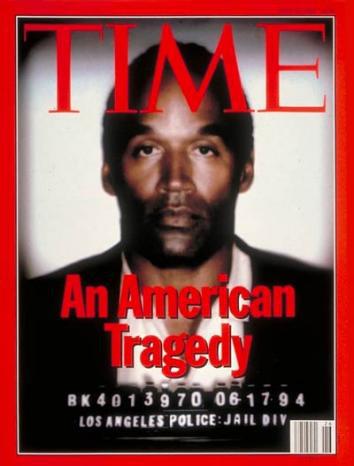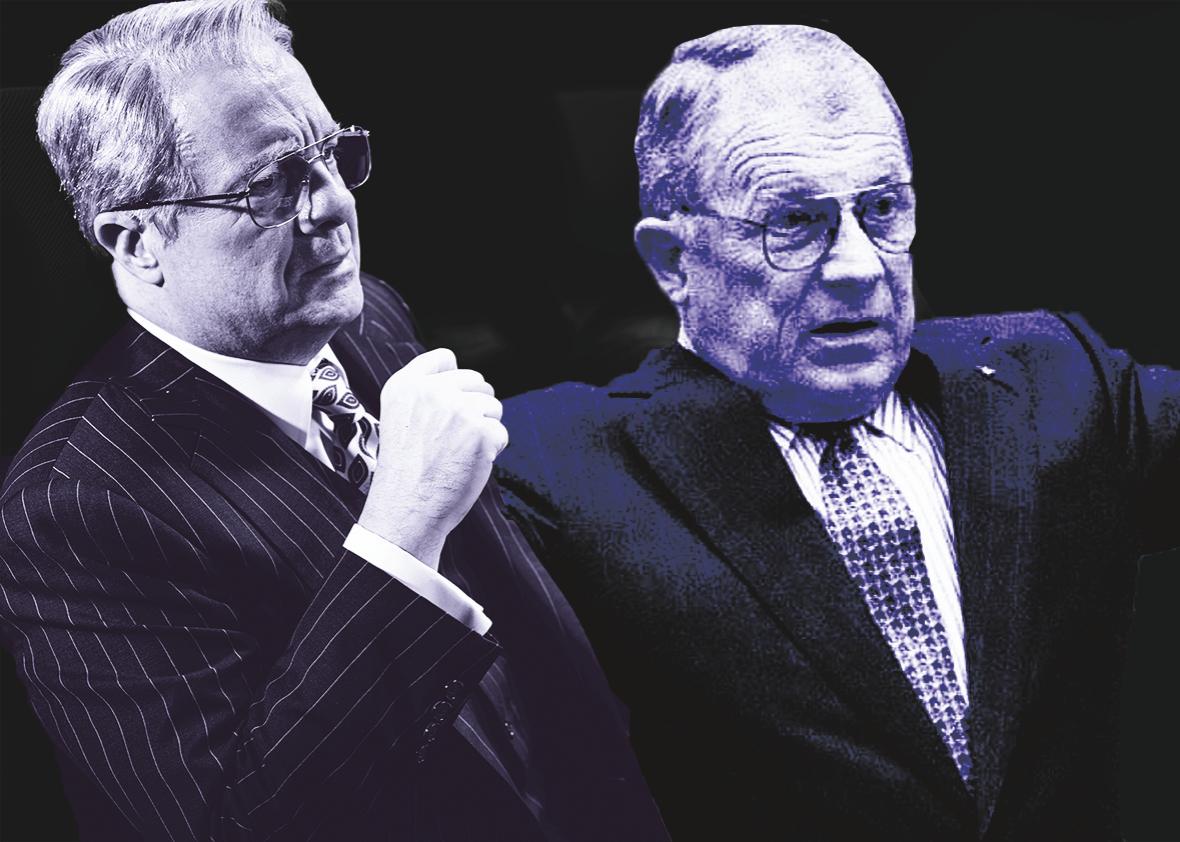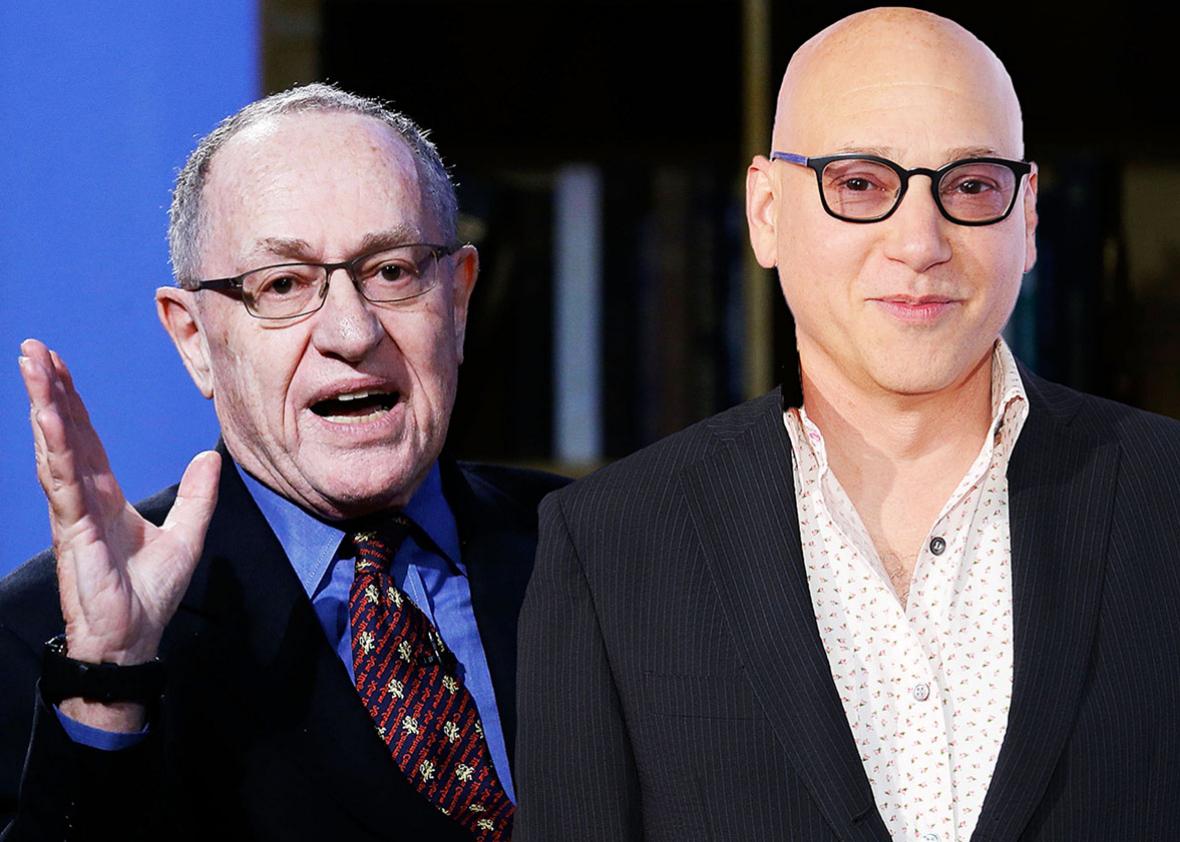In Episode 3 of The People v. O.J. Simpson, we see the defense and the prosecution moving their respective artillery into position, the former settling on race as the bedrock of their case and the latter figuring out, too slowly, that they would actually have to work quite hard to get a guilty verdict. Like the two episodes that preceded it, this one sticks pretty closely to the book it’s based on, Jeffrey Toobin’s The Run of His Life. Below, a run-down of some ways in which it deviated, and a tour of some entertaining details that were left out.
KAR-DASHI-ANS! KAR-DASHI-ANS!
As Robert Kardashian notes while walking his brood into a busy restaurant, the episode opens on Father’s Day 1994, one week after the murders of Nicole Simpson and Ron Goldman. At the table, we are treated to some Kardashian trivia when young Kim asserts that O.J. Simpson is her godfather. I can’t find any reliable evidence of this. A writer for the website Romper couldn’t either: it seems the best clue on the subject lives on a set of audio recordings that were played in court during Simpson’s 2007-2008 robbery trial. A story in the L.A. Times described one tape in which Simpson could be heard watching television alongside a man named Thomas Riccio, and seeing Kim on the screen being interviewed on a talk show. From the Times:
“My goddaughter is being interviewed,” Simpson announces. As Kardashian chats about being young and rich in Hollywood, Riccio and a man seeking a photo with Simpson make salacious comments about her exotic beauty. The former NFL star ignores them.
“I was in the hospital when she was born,” he says softly.
Was O.J. telling the truth when he said that? Kim herself has not provided any clarification, except in a 2009 interview with Dr. Phil, in which she said she and her sisters addressed their dad’s friend as “Uncle O.J.” (For what it’s worth, in the TV show, Robert Kardashian reminds his daughters that O.J. is their “Uncle Juice,” which is funnier.)
At the end of the scene, little Rob Kardashian says something about his mom Kris, and how she and her husband Bruce have been appearing in Thighmaster commercials together. These commercials are mentioned in Toobin’s book, which quotes an anonymous associate of Kardashian’s saying, “It bothered him that she was on TV all the time with the Thighmaster. This case was his way to step over them. This was better than infomercials.”
To my surprise, I wasn’t able to find the Kris and Bruce Thighmaster commercial on YouTube, though I am happy to pass along this related content from US Weekly.

Time magazine
Time magazine scandal
Part of what makes The People v. O.J. Simpson so much fun to watch is the way it toggles between scenes that show the main characters up close and scenes that focus on media coverage that many viewers are likely to remember. The second scene of Episode 3 takes us inside the newsroom at Time, which published a controversial cover using O.J.’s police mugshot. The reason the cover was controversial, as portrayed in the episode, is that the person who designed it added “a bit of chiaroscuro” to the mugshot, making O.J.’s skin look darker than it really was and causing critics to accuse the magazine of a cynically racist ploy to make O.J. seem more guilty.
I don’t know if the graphic effect Time used was actually chiaroscuro. But according to Toobin’s book, everything else about the scene is true to life: after initially slotting a painting of O.J. as their first post-murder cover, they decided to go with a photo-illustrated version of the mugshot, which was released by the LAPD mere hours before the magazine was supposed to close.
The cover caused an immediate scandal. Toobin quotes Dorothy Butler Gilliam, then-president of the National Association of Black Journalists, saying, “The cover appeared to be a conscious effort to make Simpson look evil and macabre, to sway the opinion of the reader to becoming fixated on his guilt.” The week after the cover ran, the managing editor of Time wrote a full-page apology, and assured readers that “no racial implication was intended by Time or by the artist.”
Toobin treats the episode as extremely important to the case, casting it as the first instance of race becoming the focus of media coverage and a clear signal to other publications that the subject was a sensitive one. “For the mainstream press, fearful of enduring a Time-like ordeal, the priority became how to avoid giving offense to [black leaders,]” Toobin writes. “No one recognized these developments faster, or exploited them more, than O.J. Simpson’s lawyers.”
Marcia Clarke
The show portrays Marcia Clark as the kind of prosecutor who lives for litigation—so much so that she gave up a higher-paying administrative post after getting a promotion in order to get back to the front lines. “I hated it. I begged them to let me back in the courtroom,” Clark is quoted as saying in the Toobin book. “I learned that all I wanted to do was try cases.” Her timing couldn’t have been better: her return to the battle ranks took place just a few weeks before the O.J. trial started.
Alan Dershowitz
It seems crazy to think that a famous lawyer could go from talking about how a guilty someone is on national television to working for that someone and trying to prove his innocence. But that’s how Episode 3 portrays Harvard Law School professor Alan Dershowitz, who is shown telling Larry King in an on-air interview that the “evidence against Simpson is overwhelming” before Robert Shapiro decides to bring him on as a member of the “Dream Team.”
This all checks out. Toobin memorably describes Dersh’s promiscuous media appearances in the aftermath of the Simpson-Goldman murders as having “a manic quality, as if the bookish yeshiva boy from Brooklyn still cannot believe that others care what he thinks.” Not that Dershowitz thought the case was un-winnable. In an interview with Charlie Rose, Toobin recounts, the lawyer said that the case could end with O.J. walking, and predicted a “Bobbitt-type verdict, which will send a message out, ‘Gee, you can get away with this kind of stuff.’”
Toobin notes there was nothing technically wrong with Dershowitz joining O.J’s defense team after making these remarks: “Shamelessness,” he writes, “is a moral, rather than a legal, concept.”
Mark Fuhrman’s file
A turning point in Episode 3 occurs when Shapiro orders his investigator, Pat McKenna, to do some digging on Mark Fuhrman, the LAPD detective who discovered the bloody glove on O.J.’s property. The McKenna character tells Shapiro that he knows Fuhrman from working a security detail with him years earlier for Johnny Carson; later, McKenna comes back to Shapiro to report some good news. After digging through the files on Fuhrman at the county courthouse, McKenna tells his boss, he discovered a civil lawsuit that Fuhrman had filed against the city of Los Angeles, in which he blamed “his duties as an LAPD officer” for making him “into a bigot.”
According to Toobin’s book, there are a few things wrong with this portrayal. First, the person who knew Fuhrman from working with him on Johnny Carson’s security detail wasn’t McKenna, but a former LAPD officer named Zvonko “Bill” Pavelic whom Shapiro had hired as an investigator. More importantly, Pavelic’s discovery of Fuhrman’s bombshell lawsuit turned not on a slog through the county courts archives but on a bit of luck: not long before Nicole and Ron Goldman were killed, Pavelic just happened to get hired as a consultant on a police brutality case in which Fuhrman was accused of wrongfully shooting at a suspect and then planting a knife on him to justify it.
Fuhrman’s lawsuit—in which the detective sought to wring disability benefits out of LA’s Fire and Police Pension System on the basis that he had “sustained seriously disabling psychiatric symptomatology” as a result of policing street gangs—came to Pavelic’s attention during pretrial discovery on the brutality case, and he told Shapiro about it a few days after he joined the Dream Team.

Photo by Frank Micelotta/FX
Jeffrey Toobin
One charming thing about Episode 3 is that it shows us the origin of its own source material, with a scene in which a young New Yorker reporter named Jeffrey Toobin surprises Shapiro at his office and conducts an interview with him about the case. In the show, Toobin is in L.A. because he’s working on a story about “cash for trash,” the semi-journalistic practice of paying witnesses in high-profile criminal trials to give interviews. In reality, though, that story had already been published by the time Toobin showed up at Shapiro’s office, and it was only afterwards that New Yorker editor Tina Brown sent Toobin to try to interview Shapiro.
Perhaps more importantly, Toobin already knew about Fuhrman’s file when Shapiro agreed to talk to him: acting on a vague tip from Dershowitz, his former professor, Toobin had gone to the L.A. County Courthouse and dug up the documents himself. All Shapiro did was confirm for Toobin—on background—that the defense team planned to use Fuhrman’s record as the basis of a case centered on systemic racism inside the LAPD.
A nice detail: During Toobin’s trip back to New York, the in-flight movie was Naked Gun 33 1/3, starring O.J. Simpson.
Johnnie Cochran
It is true, as The People v. O.J. Simpson suggests, that O.J. initially didn’t want Johnnie Cochran on his legal team, and resented the idea that his own blackness should be the driving force behind his defense. Is it true, though, that O.J. actually said, “I’m not black, I’m O.J.”? Well, yes, except that he actually said it to a journalist in 1968. Whether he also said it to his lawyers in 1994 in service of convincing them not to hire Cochran, I don’t know, but including it in this scene was a good move: As Toobin points out, there was a fair amount of irony in the fact that O.J. was “so alienated from the world of his fellow black Angelenos that he alone failed to recognize what was obvious to whites and blacks alike: that Johnnie L. Cochran, Jr., had been waiting his whole life for this case, and this case had been waiting for Johnnie Cochran as well.”
The getaway bag
The scene in which the Chris Darden character agrees to join Marcia Clark’s team of prosecutors includes a reference to the “passports, fake beard, [and] $8,700 in cash” that were found in A.C. Cowlings’ Ford Bronco after O.J. was finally arrested. According to Toobin, it was actually $8,750. Also, the list of items discovered in the car was actually a bit longer. Per Toobin: “In what appeared to be Simpson’s travel bag, they found O.J.’s passport and a plastic bag that contained a fake goatee, a fake mustache, a bottle of makeup adhesive remover, and three receipts from Cinema Secrets Beauty Supply, dated May 27, 1994.” There was also a loaded gun, registered to an LAPD officer who had done security work for O.J. years earlier.

Witnesses would later come forward to say that O.J. used the fake mustache and fake goatee so that he could take his kids to amusement parks “in peace.”
